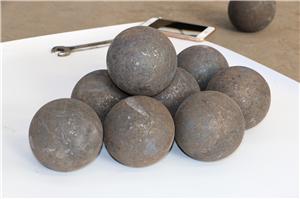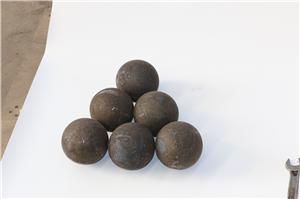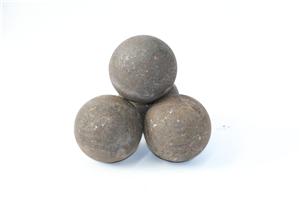How to control the hardness of forged steel balls
Controlling the hardness of forged steel balls is a critical step in ensuring that their performance meets the requirements of a particular application. Control of hardness is achieved primarily
through optimization of material selection, heat treatment processes and machining processes. The following are the main methods used to control the hardness of forged steel balls:
**1. material selection**
The hardness of steel balls is closely related to their chemical composition. By adjusting the alloying element content of steel, its hardness can be significantly affected:
**Carbon (C)**: Increasing the carbon content can increase the hardness of steel, but too high a carbon content may lead to increased brittleness.
**Chromium (Cr)**: Chromium increases the hardness and wear resistance of steel, while enhancing corrosion resistance. **Manganese (Mn)**: Manganese helps to increase the strength and hardness of steel while improving toughness. **Other alloying elements**: such as molybdenum (Mo), nickel (Ni) and vanadium (V) further optimize the hardness and overall properties of steel.
Selecting the right steel composition is the first step in controlling hardness and is usually based on specific application requirements (e.g., wear resistance, impact toughness, etc.).
**2. Heat treatment process**
Heat treatment is the core aspect of controlling the hardness of forged steel balls, which mainly includes two key steps: quenching and tempering:
**(1) Quenching
**Purpose**: to improve the hardness by rapidly cooling the steel organization into martensite.
**Method**: The forged steel balls are heated to the austenitizing temperature (usually 850°C-950°C) and then rapidly cooled by immersion in water, oil or polymer quenching medium.
**Control Points**:
Quenching temperature: too high a temperature may result in grain coarsening, too low a temperature will not allow complete austenitization.
Cooling rate: too rapid a cooling rate may result in cracking, too slow a cooling rate will not achieve the required hardness.
**(2) Tempering
**Purpose**: To reduce the brittleness after hardening, adjust the hardness and increase the toughness.
**Method**: Heat the quenched steel ball to a lower temperature (usually 150°C-400°C), hold for a period of time and then cool slowly.
**Control points**:
Tempering temperature: The higher the temperature, the lower the hardness but the better the toughness. It is necessary to balance hardness and toughness according to the needs of the application.
Holding time: too short a time may result in uneven organization, too long a time may result in excessive softening.
**3. Optimization of the forging process**
The forging process also has an important effect on the final hardness of steel balls:
**Forging Temperature**: Control the forging temperature in a suitable range (usually 1,100°C-1,200°C) to ensure the plasticity and organization uniformity of the steel.
**Forging Pressure**: Proper forging pressure can refine the grains and improve the densification and hardness of the material.
**Cooling rate**: The cooling rate after forging affects the formation of the organization, too fast or too slow cooling may lead to substandard hardness.
**4. surface treatment**.
In some cases, the hardness of steel balls can be further adjusted by surface treatment techniques: **Surface hardening**: Carburizing, nitriding or induction hardening are used to increase the hardness of the steel ball surface while maintaining the toughness of the core.
**Coating technology**: Wear-resistant coatings (e.g. ceramic coatings) are applied to the surface of the steel balls to enhance the surface hardness.
**5. Quality testing and control**
To ensure that the hardness of steel balls meets the requirements, strict quality testing is required:
**Hardness test**: Measure the hardness of the steel balls by using a hardness tester (e.g. Rockwell hardness tester HRC or Brinell hardness tester HB).
**Metallographic analysis**: Observe the microstructure of the steel balls through a microscope to ensure that they are homogeneous and free of defects.
**Impact test**: Evaluates the performance of steel balls under impact loading to ensure a balance of hardness and toughness.
**6. Application requirements oriented**
Different applications require different hardness of steel balls, so specific application scenarios need to be considered when controlling hardness:
**High hardness requirement**: e.g. grinding media in mining ball mills, where high hardness is required to resist wear.**Medium hardness requirement**: such as grinding media in the cement industry, which requires a balance of hardness and toughness.
**Low hardness requirements**: such as mixed media in some chemical industries, where a lower hardness may be required to avoid excessive wear on the equipment.
**summary**
Controlling the hardness of forged steel balls is a systematic project that involves a number of aspects such as material selection, forging process, heat treatment and surface treatment.
By optimizing these process parameters, the hardness of steel balls can be precisely adjusted to meet the needs of different industrial applications. Meanwhile, strict quality testing and
customized design according to the application scenarios are the keys to ensure the excellent performance of steel balls.




